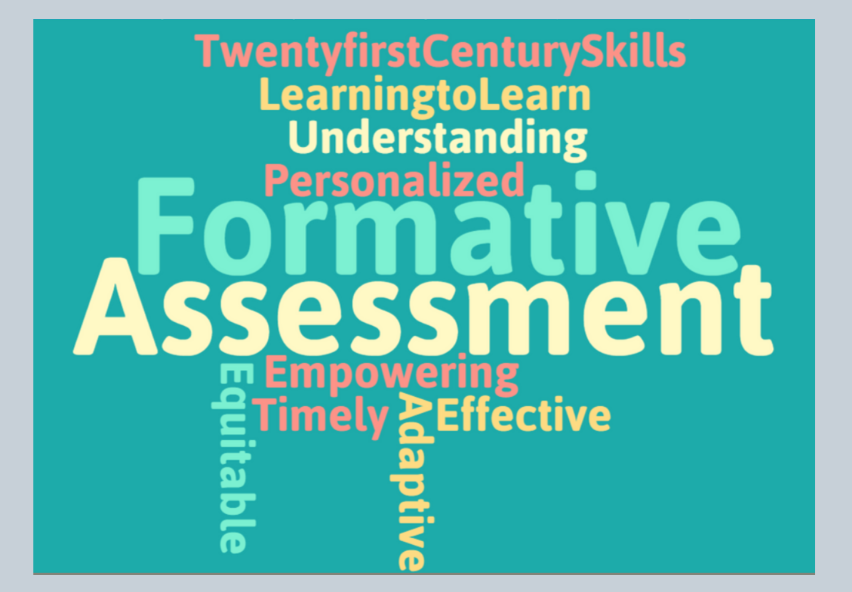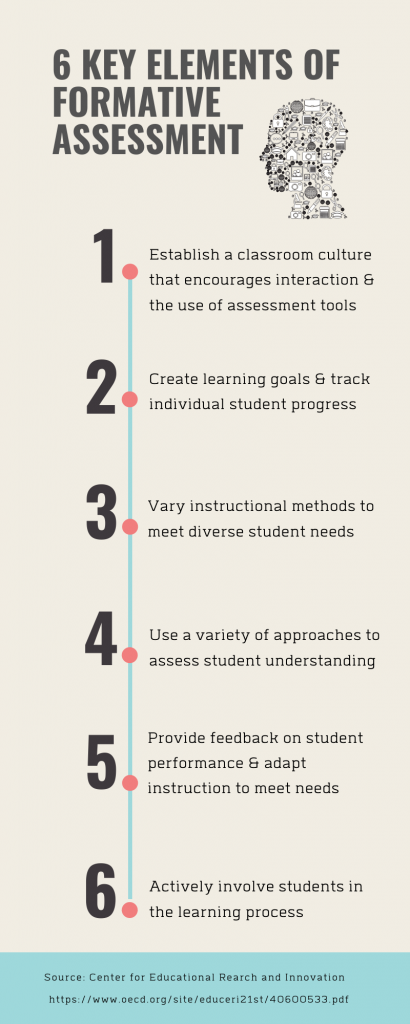
Formative assessments are a key component of grounding students in 21st century skills. By providing feedback while students are learning instead of waiting until the end of a lesson or term, learners can recognize what they are and aren’t understanding. Similarly, educators can adjust their teaching methods to better meet their students’ needs.
Building Skills for Adulthood
Inquiry-based learning is largely recognized as an effective way to teach students the skills they will need as adults, including the ability to collaborate, think deeply, and become independent learners. Traditional summative assessments, however, are often not effective at capturing the learning that occurs through this type of instruction. (Frisella, 2019). Formative assessment, on the other hand, can be used to record the process of learning, and provide just in time feedback so that both students and teachers can course-correct if necessary.
Given the goal of learning with understanding, assessments must tap understanding rather than merely the ability to repeat facts or perform isolated skills.
“How People Learn: Brain, Mind, Experience and School.” Bransford, J.D., Brown, A.L.& Cocking, R.R. (Eds.). (2000) p. 19
Formative Assessment and Metacognition
One of the most interesting things I have learned in the DEL program is the importance of metacognition or “thinking about thinking.” I find it ties into almost everything I am studying, from mindful use of technology to awareness of goals and intentional listening during a coaching session. By teaching students to pay attention to how they learn through formative assessment, educators give them much more than knowledge of a specific content area. According to a report from the Centre for Educational Research and Innovation, “The student who has awareness of how he or she learns is better able to set goals, develop a variety of learning strategies and control or evaluate his or her own learning resources” (2008, pg. 10).
Quantitative and qualitative research on formative assessment has shown that it is perhaps one of the most important interventions for promoting high-performance ever studied.
Centre for Education Research and Innovation (2008)
Creating a Classroom Culture of Helpful Assessment
The Centre for Educational Research and Innovation (CERI) proposes six key elements of formative assessment (see Figure 1). The first is to establish “…a classroom culture that encourages interaction and the use of assessment tools”; the fourth is to use a variety of approaches to assess student learning, and the sixth is to actively involve students in the learning process (p.6). Formative assessment can include journal entries, quizzes, self and peer assessments, or teacher check-in, just to name a few. The key is to make them part of everyday life in the classroom so that students don’t perceive assessments as stressful or judgmental, but as something to help them learn. As part of its research on schools using formative assessment the CERI report notes “…children who feel safe to take risks are more likely to reveal what they do and don’t understand…” (p. 8)
What the learning sciences say is the best way we can help our students learn is through frequent retrieval, and it is best done as no stakes or low stakes.”
Patrice Bain (Frisella, 2019)

The video in Figure 2 shows a school in northern California that uses a variety of formative assessment methods, both digital and paper based. The examples given show teachers forming work groups based on where students said they were that day on a project, or on questions they wanted to focus on. Students also use their Learning Management System to become aware of the cognitive skills they need to work on and can sign up for workshops that target those skills, such as data analysis (Minero, 2017).
Criteria and Feedback
Students can’t know what is expected of them without clear criteria. The CERI report (2008) cites the importance of objective learning goals used to track student progress vs. comparing performance to that of other students (p. 8). Creating rubrics that students and teachers can use to assess work is a way to provide this. Feedback tied to the established criteria needs to be “…timely and specific and include suggestions for ways to improve future performance.” (CERI, 2008, p. 9-10)
Increasing Equity
Formative assessment, because it is ongoing and often varied can enable greater equity in the classroom. Standardized tests are often accused of being inequitable since they may have references that can’t be deciphered by various cultural groups. Formative questions designed by a teacher who knows their student’s backgrounds would not have that issue.
Giving students a choice in their assessment mode is another way to differentiate instruction. In a previous post, I referenced a teacher in San Diego who gave English Language Learners the chance to record what they learned in a Science class, then transcribe the recording afterwards. The teacher was amazed by how much more this method was able to convey what the students knew, compared to a traditional written test.
Applying Technology to Formative Assessment
It can be overwhelming to a teacher to think about adding interim assessments to their already full days and standardized testing requirements. Technology coaches can encourage teachers to use formative assessment by reiterating the learning science behind it and introducing tools that make design and implementation easier and more effective.
One of the best ways technology can improve assessment and evidence gathering is to capture more of the student’s thought process toward a solution…
Bror Saxberg (Frisella, 2019)
Teachers in the video in Figure 2 used online quizzes and forms, as well as their learning management system to capture student understanding and the results were used by teachers and students. Tools like SeeSaw that allow students to capture text, video, voice recording, or ink provide teachers with a way to easily store and access student work. Seesaw and products like it also give students a record of their work and choice of media to display their understanding.
Technology can also enable easier peer feedback that teachers and the students themselves can easily access. Collaborative online spaces offered in SeeSaw, OneNote or in Learning Management Systems like Canvas let teachers see and guide how students are giving feedback to their peers.
Resources
“How Do I Use SeeSaw for Assessment?”
OneNote Audio Recording for Formative Assessment
Common Sense Media “Top Tech Tools for Formative Assessment
“75 Digital Tools and Apps Teachers Can Use to Support Formative Assessment in the Classroom”
References
Bransford, J.D., Brown, A.L.& Cocking, R.R. (Eds.). (2000). Learning: From speculation to Science, Chapter 1 in How people learn: Brain, mind, experience, and school. Washington D.C.: National Academy Press. Retrieved from: https://www.nap.edu/read/9853/chapter/3
Center for Educational Research and Innovation. (2008). Assessment for Learning – The case for formative assessment. OECD/CERI International Conference, Learning in the 21st Century: Research, Innovation and Policy. Retrieved from: https://www.oecd.org/site/educeri21st/40600533.pdf
Frisella, C. (2019) Measuring what matters. Empowered Learner 3(2), 17-23. Retrieved from: https://www.iste.org/explore/empowered-learner/measuring-what-matters
Minero, E. (2017). Real-time assessments providing a window into student learning. Edutopia. Retrieved from: https://www.edutopia.org/video/real-time-assessment-providing-window-student-learning
The 6 Key Elements of Formative Assessment – yes! I love that you mentioned how technology can help take the fear of added work for teachers away because the tools make design and implementation easier. This is a big deal! I struggle with keeping up with quality formative assessments and this reminds me to keep at it and use tools and platforms that support teacher and students to ‘think about their thinking’ – so powerful. It reminds me of the learning progressions I have been reading about and focusing not just on summative assessments and standardized tests. Thanks for the reminder of how important formative assessments are in the learning process and to include students in seeing how their learning is growing.
Formative assessment is so often overlooked as an element of Deep or 21st Century learning, so it is great to see your emphasis on this key learning strategy. For a very short piece there is a lot that is valuable for teachers here. Hope some facet of your coaching collaboration focuses on formative assessment so we can learn more about how coaches help peers use this strategy.
Wow! Bridget you did an amazing job informing readers of the importance behind formative assessments. I have personally been thinking a lot about formative assessments and the impact they can have on a project based learning classroom. I liked that you covered how essential ongoing feedback is for both teachers and students as well as how to add technology into the mix. Thank you for sharing your research and resources!